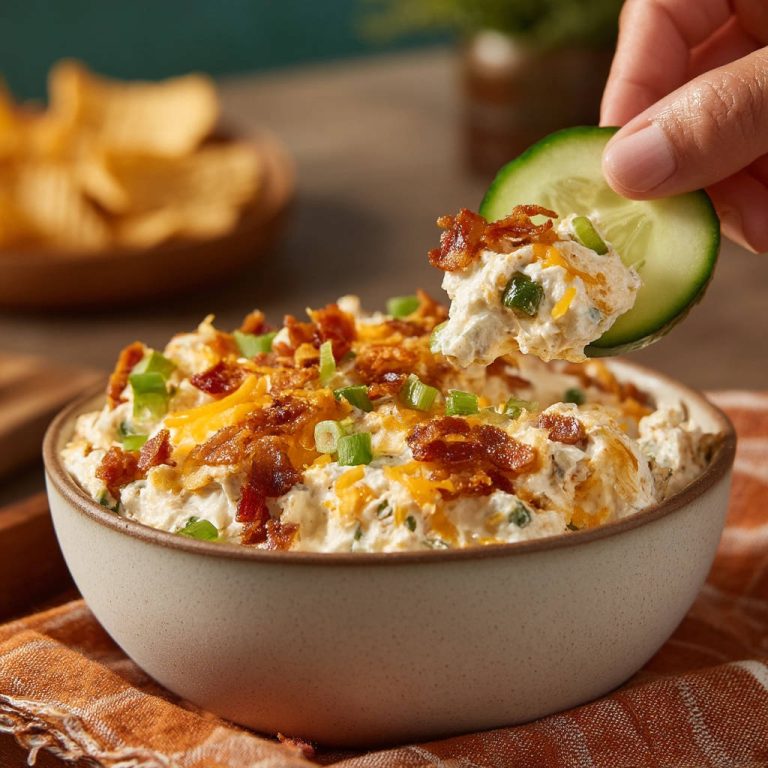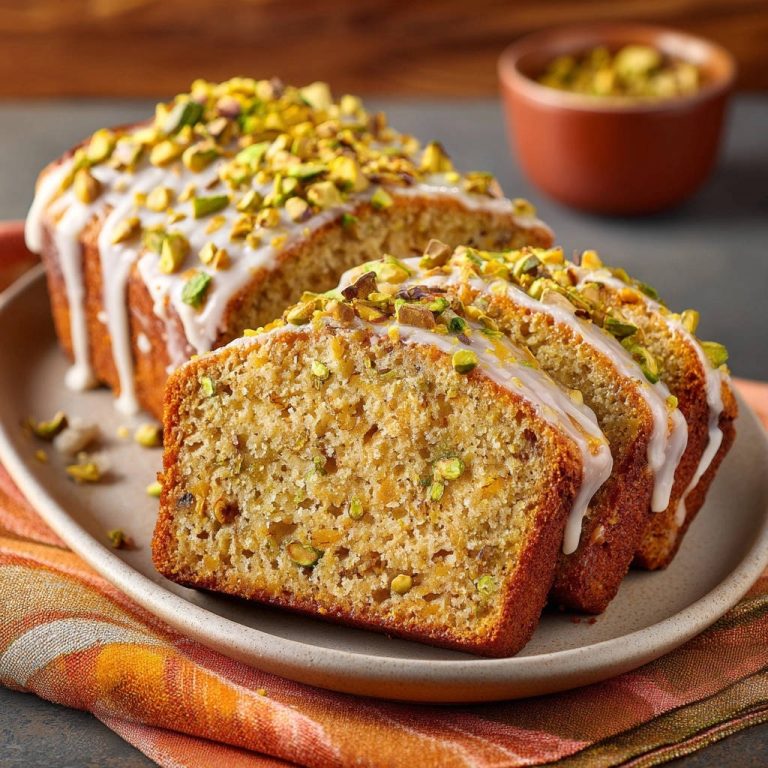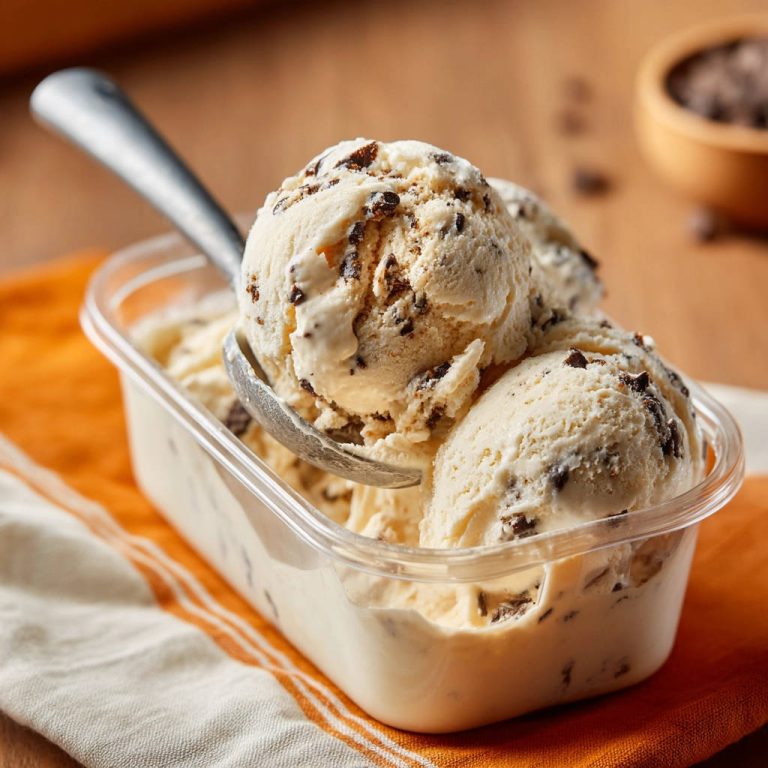Oh, the heartbreak! You’ve spent time lovingly crafting beautiful homemade bread, anticipating that first bite into warm, gooey cheese, only to pull it from the oven and find half the delicious filling pooled onto your baking sheet. If you’ve been there, you know the disappointment. It used to happen to me more often than I care to admit!
But guess what? I finally cracked the code to keeping all that wonderfully melted goodness right where it belongs: nestled safely inside the bread. It’s not some fancy ingredient or complicated technique. It all comes down to a simple, yet crucial, trick when you shape the dough. And once you know this secret, you’ll be making perfect Savory Cheese Braids (or knots, or rings!) every single time, with zero cheesy casualties.
These cheese-filled breads are incredibly satisfying to make and even better to eat. They’re soft, chewy, packed with savory flavor, and perfect for sharing. Let’s banish leaky cheese forever and make some seriously delicious cheesy bread!
Why You’ll Love These Savory Cheese Braids
Beyond the sheer joy of successfully baking bread that doesn’t leak cheese everywhere, there are so many reasons these savory braids will become a favorite in your kitchen:
- They’re incredibly versatile. While cheese and rosemary are a classic, you can easily adapt the filling to suit your cravings.
- The dough is forgiving and easy to work with, making it great for both beginners and experienced bakers.
- They make a fantastic snack, appetizer, or side dish.
- That aroma while they’re baking? Pure bliss!
- Seeing the perfectly contained, melted cheese when you tear one open is truly rewarding.
Gathering Your Ingredients for Delicious Cheesy Bread
Making great bread, even something as fun as a cheese braid, starts with understanding the role each ingredient plays. For these savory delights, we’re building a simple, reliable dough base that serves as the perfect vehicle for a generous cheese and herb filling. Here’s a closer look at what you’ll need to gather:
We begin with the essentials for any good yeast bread: active dry yeast, which needs warm water and a touch of sugar to wake up and get bubbly (this process is called proofing, and it’s your confirmation that your yeast is alive and ready to work!). The structure of our bread comes from all-purpose flour. While bread flour would give you a slightly chewier result, all-purpose works beautifully and is readily available. Don’t forget the salt; it’s crucial not just for flavor but also for controlling the yeast activity and strengthening the gluten in the dough.
To enrich the dough and give it a tender texture, we incorporate a bit of fat. You have a choice here: classic olive oil imparts a lovely, subtle savory note, while melted butter will give you a richer, slightly softer crumb. Either works wonderfully.
Now for the star of the show: the cheese! You’ll need a generous 6-8 ounces of shredded cheese. The beauty is in the flexibility here. Classic cheddar offers sharpness, mozzarella provides that iconic stretch, or a blend gives you the best of multiple worlds. Feel free to mix and match your favorites. Shredding it yourself from a block usually melts better than pre-shredded, but either will work. We pair the cheese with fresh, aromatic chopped rosemary. Its piney, slightly peppery flavor is a match made in heaven with savory cheese, adding depth and brightness.
For finishing touches, a sprinkle of flaky sea salt before baking adds little bursts of flavor and a lovely texture on the crust. To achieve that beautiful golden-brown exterior, an optional egg wash (a beaten egg mixed with a splash of water) is fantastic. Alternatively, brushing with optional melted butter gives a slightly softer crust with a rich, buttery flavor.
Here’s a simple breakdown:
- 2 1/4 teaspoons active dry yeast
- 1 cup warm water (about 105-115°F)
- 1 teaspoon sugar
- 2 1/2 cups all-purpose flour
- 1 teaspoon salt
- 2 tablespoons olive oil or melted butter
- 6-8 ounces shredded cheese (like cheddar, mozzarella, or a blend)
- 1 tablespoon fresh rosemary, chopped
- Flaky sea salt, for topping
- 1 egg, beaten (optional, for wash)
- 1 tablespoon melted butter (optional, for brushing)
Crafting Your Savory Cheese Braids: The Process
Ready to transform these simple ingredients into delicious, cheesy perfection? Making these braids is a straightforward and rewarding process. The key steps are simple, but paying attention to the details, especially during shaping, is what makes all the difference. Let’s walk through it together:
- Begin by activating your yeast. In a large mixing bowl, pour in the warm water – make sure it’s the right temperature, too hot will kill the yeast, too cool and it won’t activate. Stir in the yeast and the sugar. Give it a gentle stir and then let it sit quietly for 5 to 10 minutes. You’ll know your yeast is happy and active when the mixture becomes visibly foamy or bubbly on top. This proofing step is crucial!
- Once your yeast is proofed, add the all-purpose flour and salt to the bowl. Use a sturdy spoon or spatula to mix everything together. Don’t worry about it looking perfect yet; you’re just aiming to bring the ingredients together until you have a rough, shaggy dough.
- Turn the shaggy dough out onto a clean, lightly floured surface. Now it’s time to knead! Push, pull, and fold the dough for 5 to 7 minutes. You’ll feel the dough transform under your hands from rough and sticky to smooth and elastic. This kneading develops the gluten, which gives your bread structure. After you’ve kneaded the basic dough, add the olive oil or melted butter. It might seem messy at first, but keep kneading until the fat is fully incorporated and the dough is smooth again.
- Lightly grease a clean bowl (the same one you used before works fine). Place your kneaded dough into the bowl, turning it over so it’s coated in a thin layer of grease. Cover the bowl tightly, perhaps with plastic wrap or a damp kitchen towel. Place it in a warm spot free from drafts – this could be a slightly warmed oven (turned off!), near a sunny window, or just a warm spot on your counter. Let the dough rise for about 45 to 60 minutes, or until it has doubled in size. This fermentation step builds flavor and creates a light texture.
- Once the dough has risen beautifully, gently punch it down. This releases the air bubbles and makes the dough easier to handle for shaping. Turn the dough out and divide it into 4 to 6 equal portions. The exact number depends on how large you want your braids to be.
- Now for the magic step that prevents those dreaded leaks! Take one portion of dough and roll or pat it out into a rectangle or oval shape. It doesn’t have to be perfect. Sprinkle a generous amount of your shredded cheese and about half of the chopped fresh rosemary evenly over the center of the dough, leaving a border around the edges. Here is the key to stopping the cheese from escaping: carefully fold the dough over the filling, bringing one long edge to meet the other, or folding in the sides like an envelope. Press the edges together very firmly. You want to create a completely sealed log or packet with the cheese and rosemary trapped inside. Pinch and press along all the seams to ensure there are absolutely no gaps where the melted cheese could potentially escape during baking.
- With your filled and sealed dough log ready, gently twist or braid it into your desired shape. If twisting, just twist the log end over end. If braiding, you can slice the sealed log into two or three strips (making sure the seal stays intact at one end) and loosely braid them together. As you shape, always try to keep that sealed seam tucked underneath the bread as much as possible. Place the shaped breads onto a baking sheet lined with parchment paper – this prevents sticking and makes cleanup easier.
- To give your braids a beautiful golden crust, brush the tops generously with either a beaten egg wash (for a classic glossy finish) or melted butter (for richness). Then, sprinkle the tops with the remaining fresh rosemary and that flaky sea salt for extra flavor and texture.
- About 15-20 minutes before you plan to bake, preheat your oven to 375°F (190°C). Giving the oven ample time to heat ensures it’s consistently hot, which is important for even baking and a good crust.
- Bake the savory cheese braids for 20 to 25 minutes. Keep an eye on them! They should be golden brown on the top and bottom. If you can peek through any intentional openings or see the cheese near the surface, you’ll see it’s melted and bubbly inside. Make sure they don’t over-brown.
- Once baked to perfection, take the baking sheet out of the oven. Let the braids cool slightly right on the baking sheet for a few minutes. This allows the cheese filling to set slightly so it doesn’t all ooze out when you slice or tear into them. Serve them warm for the best experience!
Tips for Perfect Cheesy Braids Every Time
Making these savory cheese braids is pretty straightforward, but a few extra tips can help ensure your success and open up possibilities for variation.
-
Cheese Choices: Don’t limit yourself to just cheddar or mozzarella. Experiment with Gruyere for nuttiness, Monterey Jack for meltiness, or a spicy Pepper Jack for a kick. A mix of sharp and mild cheeses often gives the most complex flavor. Harder cheeses like Parmesan can be mixed in but are best combined with softer melting cheeses.
-
Herb Swaps: Not a fan of rosemary? Try chopped fresh chives, thyme, oregano, or a blend of Italian herbs. Dried herbs can work in a pinch, but use about half the amount of fresh herbs as their flavor is more concentrated.
-
Add Garlic Goodness: For an extra layer of flavor, mix a teaspoon or two of garlic powder into the flour before adding the wet ingredients, or brush the finished braids with melted garlic butter after they come out of the oven.
-
Uniform Portions: Using a kitchen scale to divide your dough ensures that each braid bakes evenly.
-
Don’t Skimp on the Seal: We stressed it in the instructions, but it’s worth repeating. Pinched edges must be firmly sealed! Imagine trying to keep liquid inside a packet – you need a tight seal all the way around.
-
Resting Before Baking: After shaping, letting the braids rest on the baking sheet for 10-15 minutes before brushing and baking can result in a slightly lighter texture, as the dough relaxes a bit.
-
Freezing Baked Braids: These freeze wonderfully after baking. Let them cool completely, then wrap tightly in plastic wrap and foil. Reheat in a 350°F (175°C) oven until warmed through.
-
Speedy Option: While homemade dough is wonderful, you can adapt this filling and shaping technique using store-bought pizza dough or even crescent roll dough sheets for a much quicker version. Just be extra careful with sealing thinner doughs!
Serving Suggestions
Savory cheese braids are incredibly versatile. They are utterly delicious served warm straight from the oven as a simple snack or appetizer. But they also make fantastic companions to other dishes.
Serve them alongside a hearty soup, such as our Hearty Beef Stew or our comforting Grandma’s Comfort Chicken Soup. They’re perfect for dipping! They also pair well with a simple green salad, a bowl of chili like our Hearty Beef Chili, or even as a side for pasta dishes instead of traditional garlic bread.
Savory Cheese Braids: Your Questions Answered (FAQ)
Q: My cheese still leaked! What did I do wrong?
A: Don’t worry, this is the most common issue! The primary culprit is almost always an insufficient seal during shaping (Step 6). Go back and really focus on pinching those edges together firmly all the way around the log or packet before you twist or braid. Any tiny gap is an escape route for melted cheese. Also, avoid overfilling the dough – too much cheese makes it harder to get a tight seal.
Q: Can I use different types of cheese?
A: Absolutely! This recipe is very adaptable to different cheeses. Cheddar, mozzarella, Monterey Jack, Gruyere, Swiss, provolone, or a blend of your favorites will work well. Cheeses with a higher moisture content (like fresh mozzarella) might release more liquid, so using a blend with a drier cheese or ensuring they are well-shredded can help. Avoid very crumbly or hard cheeses as the sole filling, as they won’t melt into that glorious gooey center.
Q: I don’t have fresh rosemary. Can I use dried?
A: Yes, you can substitute dried rosemary. Dried herbs are more potent than fresh, so use less. For every tablespoon of fresh rosemary, use about 1 teaspoon of dried rosemary. Make sure to crumble the dried rosemary between your fingers before adding it to release its flavor.
Q: Can I make the dough ahead of time?
A: Yes, you can! After the initial rise (Step 4), you can punch the dough down, wrap it tightly in plastic wrap, and place it in the refrigerator for up to 24 hours. On baking day, take the dough out, let it sit at room temperature for about 30-45 minutes to warm up slightly, then proceed with shaping and baking as directed.
Q: My dough isn’t rising. What should I do?
A: This usually points back to the yeast. Either your water wasn’t the right temperature (too hot kills it, too cold it’s sluggish) or your yeast is old and inactive. Check the expiration date on your yeast. If it didn’t get foamy in Step 1, it’s best to start over with fresh yeast and properly warm water. Ensure your rising spot is genuinely warm and free of drafts.
Q: Can I add other fillings?
A: Get creative! Besides cheese and rosemary, you could add finely minced garlic, a pinch of red pepper flakes for heat, sun-dried tomatoes (drained and chopped), caramelized onions, or even some cooked crumbled bacon (remember to keep it just “bacon”). Just don’t add too much extra filling, as it can make sealing difficult and contribute to leaks.
Bake Up Some Joy!
There’s something truly special about baking bread from scratch, and when that bread is stuffed with melty, flavorful cheese, it reaches a whole new level of deliciousness. With this simple shaping trick, you can confidently bake these savory cheese braids, knowing that all that cheesy goodness will stay right where it belongs.
They’re perfect for gatherings, lunchboxes, or just a cozy afternoon snack. Give them a try, master the leak-proof seal, and enjoy the wonderful world of cheesy, herby bread. We can’t wait to hear how yours turn out!
Happy Baking!
Savory Cheese Braids
Ingredients
- 2 1/4 teaspoons active dry yeast
- 1 cup warm water (about 105-115F)
- 1 teaspoon sugar
- 2 1/2 cups all purpose flour
- 1 teaspoon salt
- 2 tablespoons olive oil or melted butter
- 6-8 ounces shredded cheese (like cheddar, mozzarella, or a blend)
- 1 tablespoon fresh rosemary, chopped
- Flaky sea salt, for topping
- 1 egg, beaten (optional, for wash)
- 1 tablespoon melted butter (optional, for brushing)
Directions
- In a large bowl, combine the warm water, yeast, and sugar. Let stand for 5-10 minutes until foamy.
- Add the flour and salt to the yeast mixture. Stir until a shaggy dough forms.
- Turn the dough out onto a lightly floured surface. Knead for 5-7 minutes until smooth and elastic. Add the olive oil or melted butter and knead until fully incorporated.
- Place the dough in a lightly greased bowl, turning to coat. Cover and let rise in a warm place for 45-60 minutes, or until doubled in size.
- Punch down the dough and divide it into 4-6 equal portions.
- For each portion, roll or pat the dough into a rectangle or oval. Sprinkle a generous amount of shredded cheese and about half of the chopped rosemary over the center of the dough. Here’s the key to stopping leaks: carefully fold the dough over the filling, pressing the edges firmly together to create a sealed log or packet. Ensure there are no gaps where the cheese can escape.
- Once sealed, twist or braid the dough log, keeping the sealed seam tucked underneath as much as possible. Bring the ends together to form a ring or braid them into desired shapes. Place on a baking sheet lined with parchment paper.
- Brush the tops of the shaped breads with beaten egg wash or melted butter for a golden crust. Sprinkle with the remaining fresh rosemary and flaky sea salt.
- Preheat oven to 375F (190C).
- Bake for 20-25 minutes, or until golden brown and the cheese is melted and bubbly inside (watch through any openings you intentionally created, ensuring it doesn’t burn).
- Let cool slightly on the baking sheet before serving warm.








